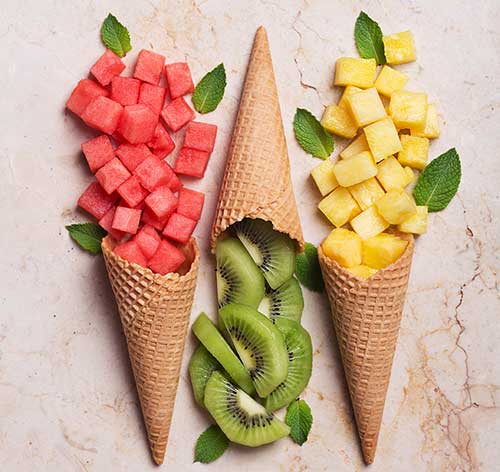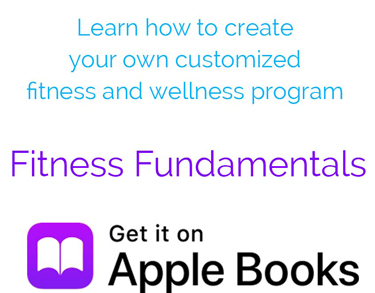Glycemic Index paints an incomplete picture
Here I am again, telling you to stop counting calories. I have repeatedly brought up Dr. Jason Fung’s book “The Obesity Code,” wherein he explains in clear language why calories are a distraction. The degree, frequency, and severity of insulin responses to food is what matters when it comes to improving blood sugar and/or body composition. If you want reduce your risk of developing metabolic disorders like diabetes, or if you want to lose body fat, stop counting calories!
Rather, let’s look at this insulin issue a bit more.
Glycemic Index vs Calories
Many people are becoming more familiar with the Glycemic Index. This rating lets you know the speed and severity at which a particular food will raise, or perhaps spike, your insulin levels. Insulin is released in tandem with blood glucose levels, and regulates how much sugar is stored for later use.
Why is this important? Because, over time, with too frequent and/or severe fluctuations in your blood sugar, you become susceptible to insulin resistance. This forces your pancreas to create more insulin to pull the excess sugar into storage (i.e. body fat), which itself will damage the insulin-producing cells in the pancreas, while also causing your insulin receptors to become numb to the hormone. It’s rather like a drug: You need more to get the same effect, but the damage the larger dose causes undermines the effectiveness of that larger dose.
So we turn to the artificial concept of calories to try to understand how to control our serving sizes. But this is misleading, because serving sizes tend to be ridiculously small, and if you aren’t measuring your food, you still will possibly eat far too many portions in one sitting. Americans are notorious for our serving sizes. With this in mind, the entire purpose of calories becomes even less helpful.
Back to the Glycemic Index: This score indicates how damaging a food will be to your blood sugar levels. Foods that score 0-55 are rated low impact (and thus presumed to be better for diabetics and those looking to maintain healthy weight and/or body fat ratios), 56-69 are moderate, 70 and above are high. For reference, table sugar is a 100. So the index measures the comparison between the speed and rate at which a food affects blood sugar against table sugar.
Ice Cream vs Watermelon
But this is not the whole picture. If you look at charts of foods and their Glycemic Index scores, you will notice many surprising results. Most proteins and all fats are rated 0. But highly refined proteins like whey powder do raise blood sugar, which is why consuming too much whey can still rapidly increase body fat. One glaring example of how the Glycemic Index alone can be misleading is ice cream (51) versus watermelon (76). Are you really going to accept this at face value? Do you actually want to believe the fantasy that ice cream is “better” for you than watermelon?
What I have noticed is that, as with Atkins diets, this “allows” people to consume rampant amounts of bacon and cheese, because they’re low carb, as if these huge portions of foods won’t get stored for later use. It also means people see ice cream as healthier than some fruits. This obviously cannot be right.
In the case of ice cream, the fat in it slows down the digestion of carbohydrate, which is what lowers the Glycemic Index rating for ice cream. Watermelon has no protein, fat, or fiber to slow the digestion of its sugars. But ice cream includes vast amounts of sugar, whereas watermelon has very little. Plus watermelon contains potassium, which itself helps to improve blood sugar levels. So then, what gives?
Glycemic Load
Familiarize yourself with the Glycemic Load. This scoring system takes the Glycemic Index and takes portions into account. The Glycemic Load ranks thus: 0-10 is low, 11-19 is moderate, 20 and above is high. Now look at ice cream and watermelon again, with this score in mind. Ice cream ranges 11-24 (depending on the flavor and toppings), and watermelon ranges 3-8 (depending on ripeness). Now does ice cream look “better” for you than watermelon?
Even in this example where ice cream is at the lower end of its range, it still contains many ingredients that can undermine your wellness goals when eaten in large and/or frequent portions. Watermelon contains water, vitamins, and minerals. Ice cream’s sugars get into your blood more slowly than watermelon’s; however, there is so much more sugar in ice cream than in watermelon that there really cannot be any honest comparison concerning which is the healthier option.
As with any kind of singular datum, you have to be cautious about isolating it. That diminishes the broader context. I hate the Body Mass Index scale (BMI). It looks only at the ratio between height and weight, without giving any consideration whatsoever to body composition. According to the BMI, I am obese. I’m short and relatively thick for my size. Never mind that my body fat ranges from 9-15%, I’m “too heavy” for my stature. Just as it would be ridiculous to call me obese, it would be ridiculous to believe that ice cream is a more healthful choice than watermelon.
Calories shmalories
Coming back around to calories: The number of calories doesn’t tell you anything about the quality of a food. People who cling to the absurd idea that all calories are the same will often make the ridiculous claim that 100 calories of cookies is the same as 100 calories of apples. A calorie is a unit of heat energy. It says nothing about the source of that energy. If anyone, especially a trainer or coach, tells you that ice cream is better than watermelon, that cookies are the same as apples, or that your BMI alone tells you anything meaningful about yourself… politely nod your head, fire them, and call me.
No Results Found
The page you requested could not be found. Try refining your search, or use the navigation above to locate the post.
Ripped Abs are a result of clean eating
Ripped Abs and Beauty There’ve been many signifiers of fitness and beauty over the years. You can see this by looking at art from around the world and the way people are portrayed in photographs, paintings and sculptures throughout history. Some cultures value more...
Love, a Happily Single Introvert
Dear Happily Partnered Extrovert: I love you, and I want our friendship to continue flourishing. But as an introvert there’s something I need you to understand, and I’m going to force you this one time to fully acknowledge what I’m saying to you. If you refuse, I’ll stop spending time with you.
Stacking, part 1 of 4: The importance of knowing what’s in your products
If you are concerned about what is going onto or into your body, you need to know what has been put into your meals and other products. Go for the choices that have fewer ingredients, and go with the brands that use mostly or only ingredients you can pronounce and identify readily. Use this same standard for everything, not just food.


